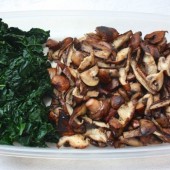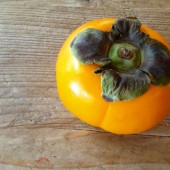If I were to characterize my style of cooking, I’d say that it’s influenced by the Mediterranean, from Italy, France, and Spain in the West, as well as Greece, Turkey, Cyprus, and Lebanon in the East. Although I love Asian food, I admit that I’m still intimidated by the ingredients. But I did recently buy my first tub of Korean Gochujang paste, so don’t count me out just yet.
Having traveled through Western Europe, I’ve been fortunate enough to eat an authentic Pan Bagnat in Nice, fresh lemon gelato in Amalfi, and a spicy chorizo tortilla in Southern Spain, but for those countries in Eastern parts of the Mediterranean, I’ve had to make do with restaurant meals, or tried to replicate the flavors at home.
Someday I’ll visit in person, but until then, I have a decent selection of Middle Eastern-themed cookbooks that have shared the ingredients and tools essential to this region’s cuisine. Some of my favorites include “Falling Cloudberies” by Tessa Kiros, Yotam Ottolenghi’s “Plenty”, and Claudia Roden’s “The New Book of Middle Eastern Food”. I could fall asleep reading them every night; they’re the kind of books that take me to another world and send me off to sleep with dreams of rosewater, almond cakes and baklava.
Although I’ve grown to love Middle Eastern food, it wasn’t a food I grew up eating. There was a time in my life when my knowledge of Middle Eastern cuisine extended to two items: hummus and pita.
While I’d eaten the occasional falafel, I’d never actually tasted hummus until I got to college. In retrospect it was a pretty horrible version, but like pizza, even bad hummus is still decent.
In our campus’s main dining hall The Ratty, my girlfriends and I would eat it every night for dessert, thick chalky lumps scooped onto plates and attacked with a army of baby carrots. We’d wander up to the salad bar en masse, once prompting group of guys to yell out “FRESHMEN!!!” Those frat boys, ever the pranksters. Yes, we were Freshmen and highly identifiable as such, but I’d like to see what those guys are up to now. Sitting in basements with thinning hair and watching ESPN.
It’s possible that some of them are making hummus too. A friend’s husband once made me Smitten Kitchen’s ethereally smooth hummus, removing the skin from every last chickpea. I was thankful. And for the record, he doesn’t have thinning hair.
When I started to cook, I realized how easy it is to make hummus at home, and began to make it often, flavoring it with various spices, pickled jalapenos, or even vegetable purees.
As I became more comfortable with hummus, I extended my reach, venturing into the world of Middle Eastern salads, including tabbouleh, and one of my favorites, fattoush, made with bits of fried pita. The recipes differ, some versions are made mostly with chopped herbs, and others use torn greens as I did here:
4 comments







